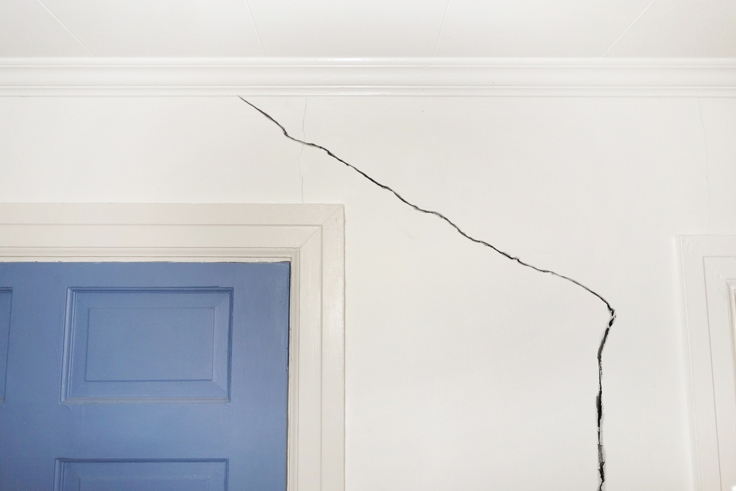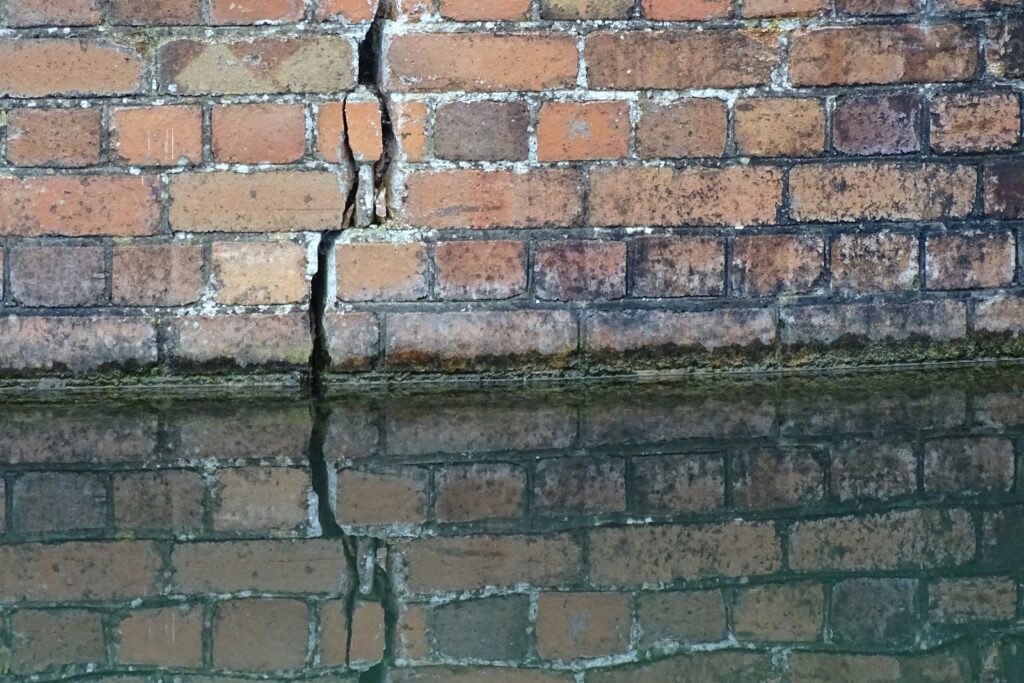
What is Subsidence and How Can You Treat it?
Few things strike fear into buyers and sellers alike than finding out a property has subsidence. Would you consider buying a property where there was risk of structural damage? This is certainly a question that many sellers have sleepless nights about – particularly if they are looking for a quick home sale – if you are struggling with any of this then speak to us we are cash house buyers and we buy any house.
Although subsidence can be a serious problem, it doesn’t need to be a complete turn-off. In most cases, subsidence is manageable and doesn’t necessarily mean the property will be unsafe to live in. Take a read of our guide to subsidence to find out all your burning questions, such as “what is subsidence?” and “how much does subsidence devalue a property?”
Table of Contents:
Put in simple terms:
Subsidence is the movement of a surface, causing the ground underneath the foundations of a building to sink and become unstable.
Subsidence tends to occur when the ground below a property loses moisture and shrinks – this is often caused by long dry spells.
The most typical cause of subsidence is due to trees and shrubs absorbing high volumes of water from the soil surrounding your property. In fact, according to Which? magazine, tree root damage is estimated to be the cause of 70% of all subsidence cases.
Common reasons for subsidence to occur are:
- The shrinking of soil beneath a property
- Previous mining activity on the site
- Ground vibrations
Soil shrinkage is the most common reason for subsidence to occur. It can be caused by a number of factors, such as water leaking into the soil under the property, which can wash away soil from the foundations. This is most common with soils with a high sand or gravel content.
Clay soils, in particular, are prone to shrinking. As the
soil shrinks, it pulls the property’s foundations which can result in
structural movement. Clay soil shrinkage can also occur after a spell of dry
weather.

Photo credit: zimmytws / Shutterstock
There are many noticeable signs of subsidence on both the inside and outside of a property. There are several tell-tale signs that should ring alarm bells if you notice them both inside or outside your property.
How to spot signs of subsidence?
- Cracks in the walls, ceilings and/or outside brickwork
- Expanding of existing cracks
- Cracks appearing after a long phase of dry weather
- Rippling of wallpaper (that isn’t caused by damp)
- Sticking of doors and windows
If you notice any signs, it is essential to seek professional advice from a Chartered Surveyor as soon as possible. The sooner it is identified and diagnosed, the easier it will be to rectify. But, bear in mind, fixing subsidence can be a lengthy process, with many cases having to be monitored for up to 12 months.
There are three main ways to treat subsidence in your property, and the most appropriate treatment option will be entirely dependent on the cause of your property’s subsidence and how severe the problem is.
Subsidence treatment options include:
- Underpinning the foundations
- The cutting back or removal of trees/bushes
- Repairing damaged drains and pipes

Photo credit: Monkey Business Images / Shutterstock
In more serious cases of subsidence, underpinning may be required as this will prevent any further movement of the property by stabilising the foundations. It is worth noting that this option is lengthy and expensive.
Even though underpinning is the treatment most associated with subsidence, it is estimated that only 10% of properties will require underpinning according to the Royal Institution of Chartered Surveyors (RICS). In fact, the Institute of Structural Engineers advises that you should attempt every other possible solution before resorting to underpinning because it is so expensive and requires major repair work.
- Underpinning
Underpinning, most expensive option, can cost anywhere between £5,000 and £50,000, depending on the size of your property and the extent of the damage already caused.
- Tree removal
The removal of a tree can provide a quick and much cheaper solution to the problem. The cost of tree removal will depend entirely on the size of tree, but you should expect to pay a tree surgeon somewhere in the region of £120 per hour. For a large tree, which may take 2 to 3 days to remove completely, a sensible price would be around £3,000 + VAT.
However, it is worth bearing in mind that in rare cases, this can lead to the opposite of subsidence, known as “heave”. Simply, heave is where the ground beneath a property swells up with excessive moisture caused by the absence of a tree that used to keep the moisture levels low. If this happens, an arboriculturist (tree specialist) will be able to provide advice.
- Pipework
If you believe leaky pipework is the cause, a CCTV drain survey can determine if this is the issue, and where the work may need to be carried out to the drainage system.
The average cost of a drain survey is around £90, but can be anywhere between £45 and £160. But, the exact price may vary depending on your area and how severe the problem is.

Photo credit: ClimbWhenReady / Shutterstock
However, it is worth noting that in some cases, if considered reasonable by your insurance company, the costs for identifying and treating subsidence may be covered by your building insurance. Therefore, it is advisable to get in touch with your insurer if you are concerned about subsidence in your property, or you would like to check if you are covered.
If the costs are not covered by your insurance and you simply cannot afford to carry out the effective treatment needed, you may wish to sell your property and move to a new home. If you are struggling to sell your property – a common occurrence when selling a property with subsidence – you may want to think about selling your house without an estate agent via a quick sale company. Companies, such as Sell House Fast can sell your house as is for cash, ensuring the problem is taken off of your hands immediately because, quite literally, we buy any houses.
If you choose to go down this route, beware of “we buy any house” scams.
Unfortunately, subsidence can be a major turn off for potential buyers. There are many negative connotations surrounding subsidence, such as buyers believing that the house is unsafe or unmortgageable, however, this isn’t entirely true.
If a property is under some kind of treatment plan and caught early, there is no reason why the property cannot become structurally sound again. In most cases of subsidence it is successfully treated.
That being said, subsidence can still devalue a property. In instances where houses do get sold with subsidence, it can cause a property to sell for around 80% of its market value.
Choose The Best Option
To find out more about how we can buy your home you can get in touch for a free valuation and cash offer from a genuine cash house buyer like Sell House Fast. We will take all the hassle and stress away.
Similar articles: What To Do If You Find Japanese Knotweed
Feature image credit: Francesco Scatena / Shutterstock


